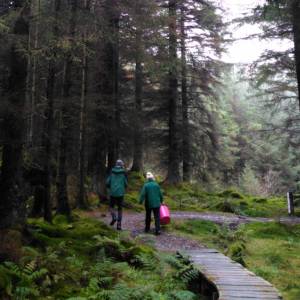Forbidden City - Not to be sneezed at!
Breakfast at the hotel was varied and an adventure of trying out new things to start the day; salad and dumplings with spicy shredded vegetables as well as egg and sausage, pancakes and fruit salad. Sadly, what I had hoped was just a reaction to pressurized cabins turned out to be a streaming dripping cold. Like a waterfall playing centre-stage it accompanied us throughout the day and accumulated squidgy debris of soggy tissues, toilet roll and serviettes, silting all pockets. .
This was a pity as it was the day Chris had booked to look around the Forbidden City. We popped out from the Underground in Tiananmen Square and walked around the perimeter wall passing queues for other sights political and cultural until reached our queue. Trying to manage the obligatory passport checks, bag checks, ticket checks and body checks between sneezes and without spattering officials with snot and germs was a challenge.
I had not realised how vast the Forbidden City actually is. What exists today is only the innermost walled sacred hub of a now destroyed secular walled city. It took us all afternoon to walk around it, and not visiting all there was to see. Traditionally the Emperors were carried from place to place in a sedan chair but the last one sensibly decided on a bicycle. The Central courtyards and buildings are all both sacred and political, representing in architectural form and in their naming, the attributes and work load of the Emperor. For example the Hall of Supreme Harmony focussed on the harmonious co-existence of all things in heaven and earth. It was the theatre for the great ceremonies of New Year, Winter Solstice, Emperor's birthday and announcement of Palace examination results and launch of military expeditions. Sacred meaning was inextricably part of the government process.
There were so many buildings that I don’t know which one this is, but fantastic, priceless and holy, under their paint and gilding they were made of wood. Fire was (and is) a huge hazard. In the past, all light and warmth came from naked flames. To combat this, by every building, there were these enormous pots, filled with water as fire insurance. In the cold dryness of winter they were swathed in blankets and had a fire under each to keep them from freezing. In their heyday they would also have looked magnificent as they were covered in gold. (This was scraped off by foreign looters during the Boxer Rebellion.)
The other thing that I thought of whilst perambulating around the formal gardens and pavilion was that, big though it was, it was also a prison, particularly for the women who were locked into the power struggle of increasing their stipends and influence and making sure their sons were in line for the throne. Cut off from the world, but not a safe place to be living!
- 1
- 0
- Google Pixel 6 Pro
- 1/833
- f/1.9
- 7mm
- 45

Comments
Sign in or get an account to comment.


